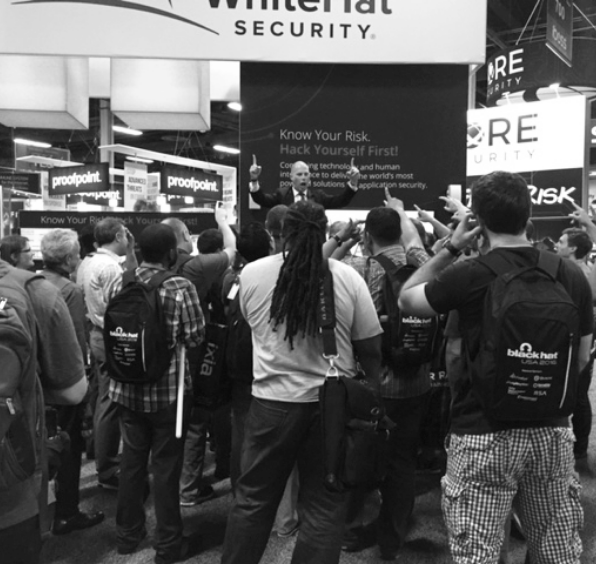Booth design, marketing, and lead generation are just a few important pieces for a successful trade show. But one of the most important aspects (and perhaps the most memorable) is your trade show staff and their etiquette. It’s essential that your exhibit staff know how to interact with and aid attendees with questions they will have about your products and/or services because ultimately, your show will fail if you don’t have knowledgeable staff representing your brand. Here are a few basic guidelines for and things to know about trade show booth staff etiquette to make sure your next event is a success!
Why does trade show booth etiquette matter?
Trade show etiquette refers to the conduct your booth staff display when they’re at the show. This is important for two reasons:
- Trade show etiquette gives your staff a set of guidelines by which to operate. When they’re not sure how to handle a situation, it gives them a place to start. This is especially helpful at someone’s first trade show, but it’s useful for everyone at every experience level.
- Etiquette helps make a good first impression. The personal qualities and behavior of your team can help you attract more visitors, gain more leads, and create the trade show results you want!
Attitude is key.
Good booth training is essential for every member of your team, but it won’t make up for a poor attitude. For front-end staff who are working with potential leads and clients, a great attitude is vital. When you’re choosing your booth team, opt for the people who are enthusiastic about going to trade shows and have a good track record with customers and clients. The best trade show booth staff are:
- Knowledgeable about the company and your products
- Motivated, proactive, and enthusiastic about attending the show
- Willing to work hard
- Helpful
- Professional
- Friendly and approachable
Practice approachable body language.
Body language is an essential nonverbal form of communication. Crossing the arms, yawning, or looking disinterested sends the message that you and your booth might be unapproachable. Because it’s easy to misread body language, it’s a good idea to go over the basics of positive body language with your booth staff. A professional, friendly demeanor looks like this:
- Stand up straight in front of the booth
- Greet people as they walk by
- Smile and make direct eye contact
- Keep hands out of pockets
- Avoid crossing arms or legs
- Avoid leaning up against furniture
Greet and engage.
This technique is the quick, 30-second icebreaker your exhibit staff use to start a dialog with each new visitor. They should be friendly and approachable and maintain eye contact appropriately. Don’t forget to pay attention to the potential customer’s body language to determine how interested they are or if you’re coming on too strong. If an attendee starts glancing around the room, that may be a sign you’re pushing them into making a purchase. Move to another customer or ask questions to renew interest in the conversation.
Ask questions that will qualify leads.
It’s important that your staff knows what kinds of leads you’re looking for. This allows them to ask the questions that show who the qualified leads are right away. Questions can include asking visitors to describe why they are at the show, what problems they’re having, or how (un)satisfied they are with their current product or service, etc.
The conversation that ensues enables your team to fully engage and qualify visitors. This is why your booth staffers also need to be good listeners; when a visitor feels you are interested in their issues, they are naturally more open to learning what you have to offer for their top of mind concerns.
Always follow up with good prospects.
Trade show booth etiquette doesn’t end when the conversation is over! After thanking the customer for their time, decide how to advise visitors of the next step – what they can expect to receive and when. Booth staff should remember to take a few minutes to record notes from every conversation, and use visitors answers to rate or rank leads for follow-up. All of the good will and positive impressions you’ve created are all for nothing if the prospect is not followed up on in a timely manner.




